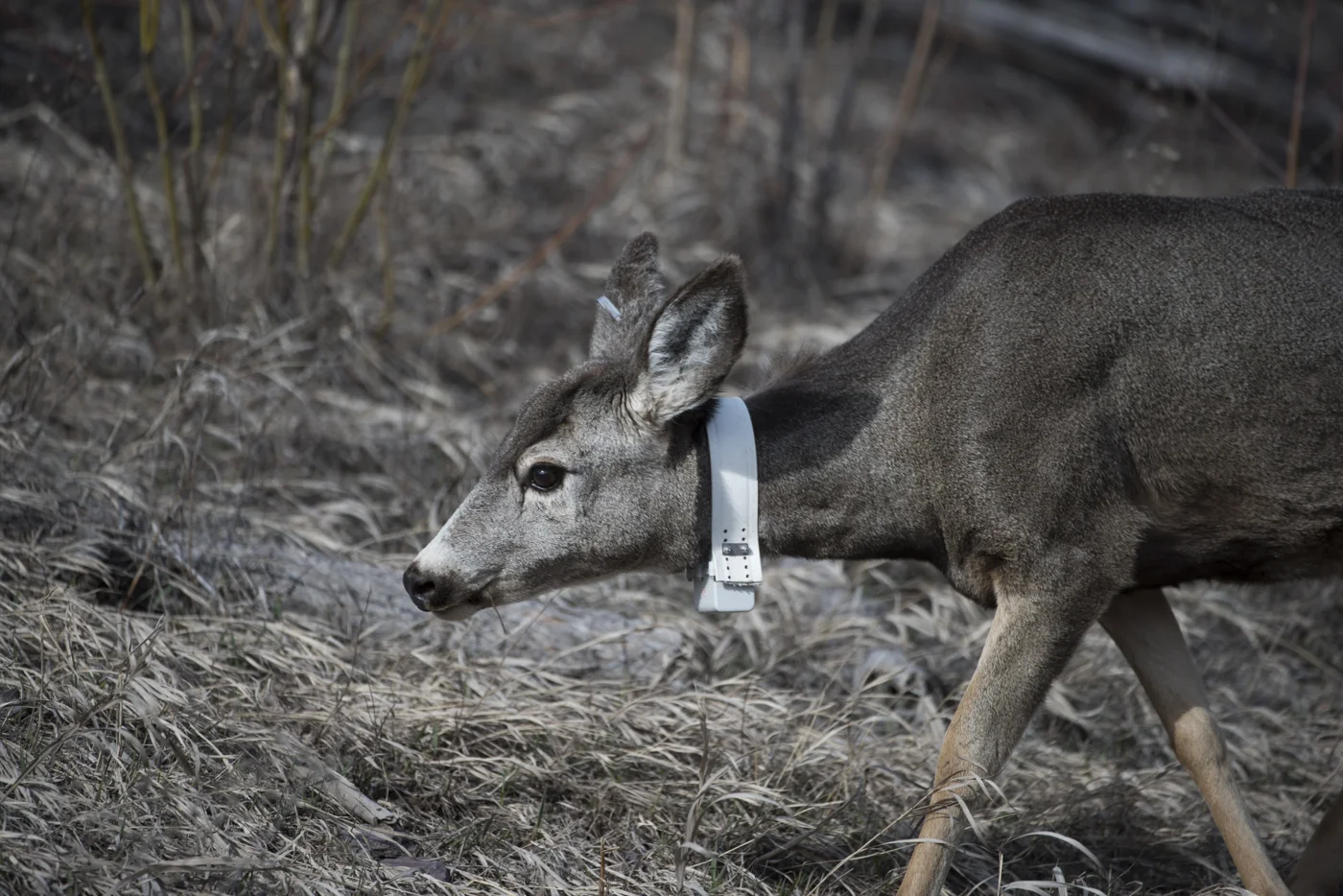A year later and there she was, within yards of the site where I had last taken her photo. She looked kinda rough around the edges, but as this past winter had been a bit on the tough side this doe was probably not doing too badly.
April 2017
I had heard in late March, 2017 that earlier that month the Montana Department of Fish, Wildlife and Parks had collared two female mule deer near the confluence of Big Creek and the North Fork of the Flathead River. Their goal was to monitor deer movement with radio transmitter devices in that area.
I venture up this portion of the Flathead Valley often. It is somewhat remote and has good winter range habitat for elk, mule deer and whitetail deer.
While recent forest fires have changed the biological scene in that area it is still possible, during winter months, to see a range of wildlife, from dippers to eagles, coyotes, elk and deer.
On April 10, 2017, returning from a site further north I spotted a small group of mule deer quietly feeding of the short tender green grass trying to emerge through last year's flattened crop of wild grass. As soon as I put the field glasses on them I noticed a deer with a white collar. With camera and tripod I maneuvered to a point where I could grab the lens and zoom back, getting the whole group. After a short wait I zoom out and photographed just an image of her. If you want to get close to deer you have to be careful. Deer tend to feed into the wind. Scenting is an important part of their survival technique. I was lucky as the breeze was moving down hill to my right, and as they were up hill to my right I don't think they knew I was there.
April 2017
Subsequent chats with MDFWP I was told this doe, because of radio collar transmissions, summered near the top of a nearby ridge, while the other collared mule deer spent her summer months up the McDonald Creek drainage several miles upstream from McDonald Lake in Glacier National Park. I found it interesting that two deer that wintered so close together would summer so far apart.
Now it is time for her to "summer over" again. In the 2017 photograph she is accompanied by twelve other mule deer. Are all the members of this group related or are all the members strictly social, or, is it a combination of both? And how does group interaction influence the summer range site? Were it not physically and economically impossible, attaching collars to all the members of this group would really be interesting. Could one find more preferable as well as less preferable summer and winter habitats, and would that better inform our scientific community about mule deer range?
To me, a second intriguing thought would be just how ancient would this mule deer doe's DNA history be at this Big Creek drainage site? Could her lineage go back to some few years after our glaciers receded? While we will never know her ancient history we can observe how she proceeds into her future. And that will prove to be just as interesting.
April 2018
As you can see from the photos, she and her "clan" appear in better shape in the April 2017 photos. Both this deer and her smaller band seem more tattered in the April 2018 images, but still look to be in reasonable health.
Sadly the second collard mule doe did not survive, and MDFWP does not know how she passed. Still, it is going to be interesting to see how this remaining mule deer doe fares as time goes on.
April 2018



